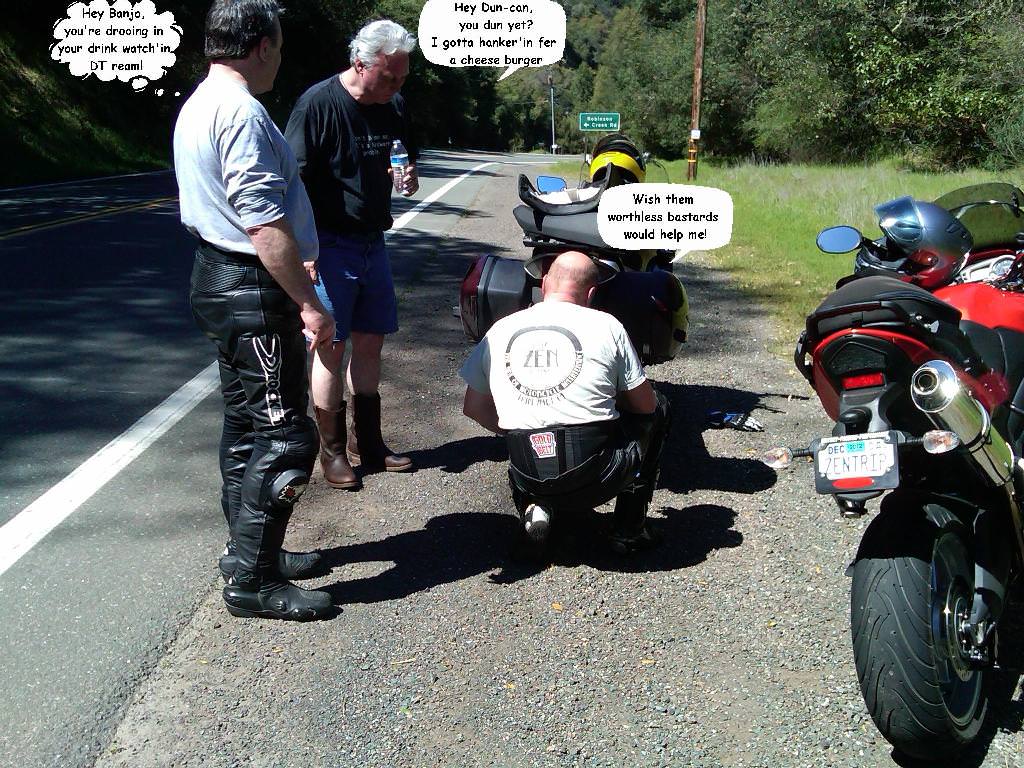Re: sticky string plugs, the two tools needed (reamer and plug insertion) come in two designs: one type is tee-shaped, which makes it a little easier to push through the hole, but the other type has regular screwdriver type handles, which makes them smaller packing to fit under the seat. Keep a set of the tee handles at home in the garage, and the screwdriver handles under the seat. Have used both types many times, both on motorcycles and on cars, always successfully.
Also, no real need for the rubber cement. I will use it if I have some on hand, but the plugs still work without it. It does make it marginally easier to insert the plugs when lubed with glue.
My most dire need for them came early on a two up cross country vacation ride with my wife. Noted flat (hey... it was only flat on the bottom) after a rest stop in the Michigan UP. We had just gone through some construction, so that must have been the cause. Never found a nail, just a little tiny hole. Tire was brand new when we had left home, so only had about 1200 miles on it. Plugged it in the rest area and rode that tire for the rest of our 6000 mile vacation.
Sticky strings FTW!
Also, no real need for the rubber cement. I will use it if I have some on hand, but the plugs still work without it. It does make it marginally easier to insert the plugs when lubed with glue.
My most dire need for them came early on a two up cross country vacation ride with my wife. Noted flat (hey... it was only flat on the bottom) after a rest stop in the Michigan UP. We had just gone through some construction, so that must have been the cause. Never found a nail, just a little tiny hole. Tire was brand new when we had left home, so only had about 1200 miles on it. Plugged it in the rest area and rode that tire for the rest of our 6000 mile vacation.
Sticky strings FTW!




